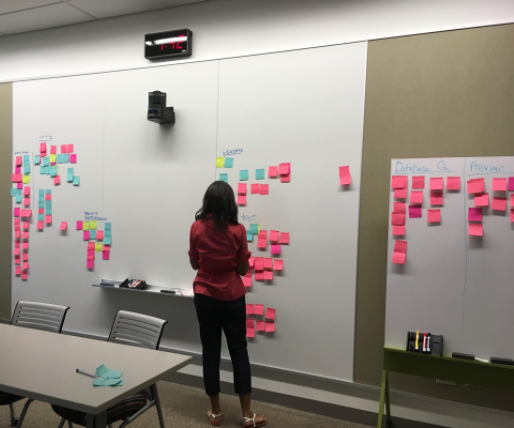Background
In a previous blog post, my colleague Kate M. Saylor and I described two of our three methodologies employed in our project to study the information seeking behaviors of U-M School of Nursing (UMSN) students. In this final blog post, we will describe our third study methodology and our findings.
Search Observations and Interviews
In the second year of our study, we added recorded search observations and interview sessions to help us better understand specific information-seeking abilities and needs of nursing student searchers. We consulted with a member of the University of Michigan Library's Design & Discovery team to help outline the scenarios and script. In 2017, we met with ten students who each received $20 gift cards as incentives. We used QuickTime to capture their search activities and to record their interview responses. Through a series of search tasks and semi-structured interview questions, we captured information about the students' ability to: identify terms, select a database or resource to search, navigate results, and refine a search.
We created an affinity diagram to analyze the complex data from the recorded interview sessions. Three team members transcribed participants’ actions and responses onto Post-It notes, which were organized using a SWOT framework (Strengths, Weaknesses, Opportunities, Threat), and then clustered by themes. We defined strengths and weaknesses as internal to the Taubman Health Sciences Library, and opportunities and threats as external factors.

Sample findings for each of the SWOT categories are below.
Strengths (something we or the library do well):
Search Development / Refinement: All students identified the main concepts of the research question, but only half of the students considered using additional related keywords within the concept (for example, "young adult OR adolescent" and "sexual health and related terms like HIV or condoms").
Weaknesses (something we or the library don't do well):
Resource Functionality: Most students were aware of RefWorks, but could not remember how to use it. A few students remembered that they needed to select items in PubMed, but could not remember which “Send to Option” to use for RefWorks.
Opportunities (barrier that we can change):
We need to emphasize the fact that students can access library resources from anywhere, not just at the library or while on the campus wireless network.
Threats (barrier that we can't change):
The timing and location of related library sessions was mentioned by several students. The sessions were at the end of a very long clinical day, which also meant the students did not have their computers and could not follow along with the demonstration or complete any hands-on activities.
Challenges
As with any long-term project, we tried to plan for all of the potential challenges that we were likely to encounter, but we were still surprised by a few unforeseen complications. We were prepared to deal with data collection difficulties over the four years of the project. For instance, distributing the survey to the entire cohort of nursing students through the campus learning management system is easier to do and retrieves higher response rates when we are integrated in the large, required nursing courses for the semester, but we aren't currently integrated in all years of the undergraduate curriculum. This makes survey distribution for the third year a little more challenging.
Implementation of our suggested changes to integration is also challenging. After starting our project, we learned that the undergraduate Bachelor of Science in Nursing curriculum was being revised with an anticipated Year 1 roll out in Fall 2018. All four years of the program will be transitioned to the new curriculum in 2021. Many of the courses and integration points we have been collecting data on will change significantly in the new curriculum. The shifting content, faculty, and timing will make it challenging to propose and implement changes to our current integration.
We have also identified a few more courses for potential integration, which is great, but we are getting close to the point of having more opportunities than informationists for in-person instruction. This is a good challenge for us, though, because it will force us to investigate alternative modalities like Canvas modules, recordings, and asynchronous consultations for instruction.
Impacts
Over the last two years of collecting data, we have learned a lot about what these students need to know, think they know, actually know, and what they don't know. There have been a few improvements that we have been able to implement immediately.
Through the observation interviews and search strategy development survey question, we identified gaps in second-year students’ searching skills. This data helped the faculty lead of the second-year nursing research course see that the students needed more literature searching instruction. For the 2018 Winter course we increased our in-person instruction time and provided an additional "office hour" during their in-class group work based on specific recommendations from the focus group participants. We have also adjusted the instruction content to better meet the students’ information needs.
Based on feedback we received from the focus group, we learned that many of the students in the large research course struggled to follow along with our database instruction. The nature of a large classroom (~150 students) makes it difficult for students to feel comfortable asking questions. And, because students requested more active learning activities, we developed a new instructional object (interactive worksheet) to help guide the students through the process of searching.
Beyond the impact the specific findings have had on our instruction activities, the act of doing the project has also had a major impact on our relationships with the School of Nursing faculty. Many of the faculty we have talked with are excited and impressed that the library is willing to invest the time and resources into improving students’ outcomes.
If you have questions about this project, please contact Kate Saylor and Emily C. Ginier.